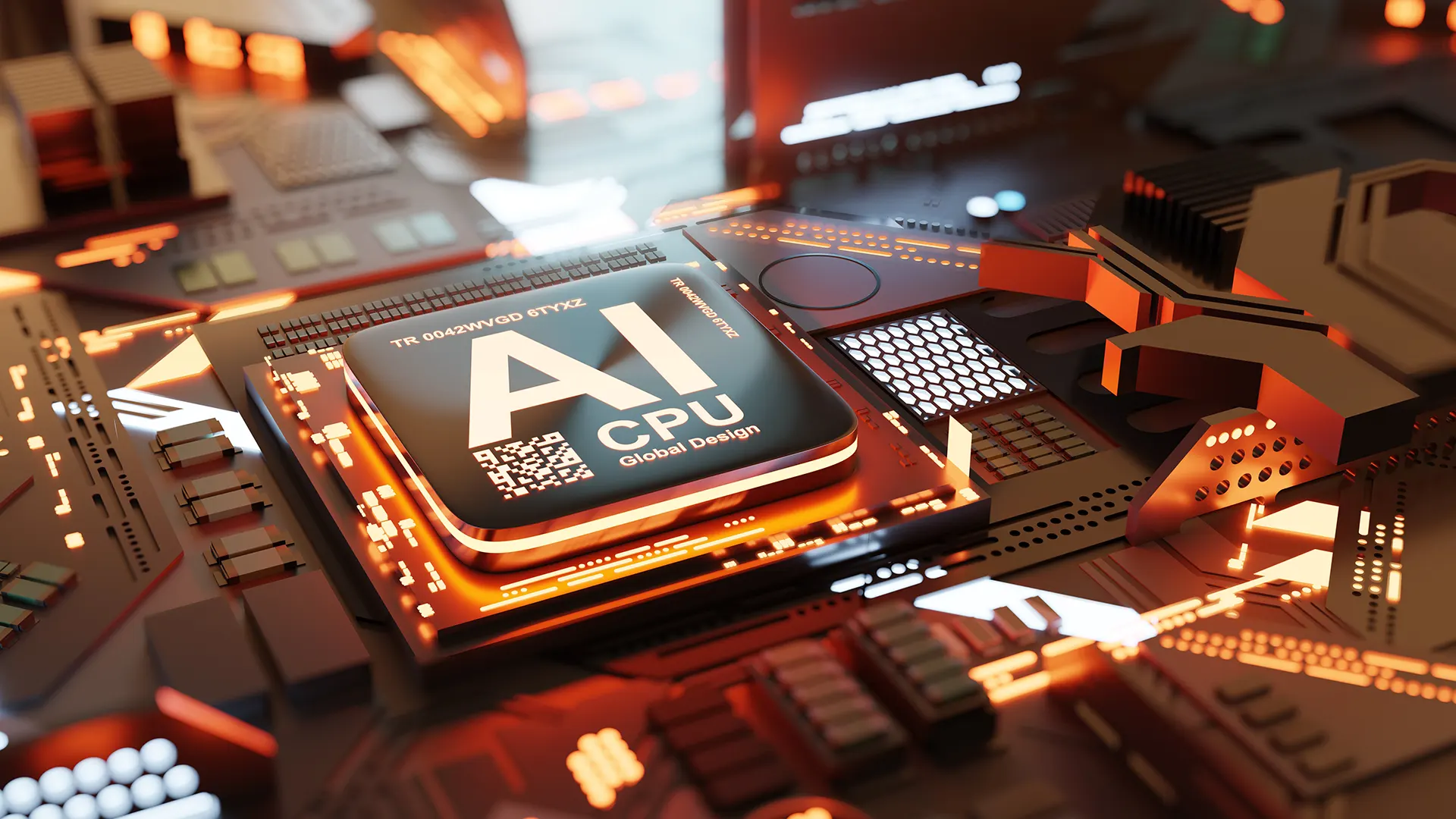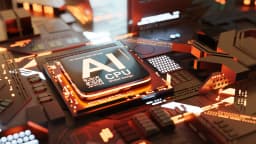
The AI revolution continues to reshape industries in 2025, with artificial intelligence now embedded in everything from smartphones to autonomous vehicles, cloud computing, robotics, and edge devices. At the heart of this revolution are AI chips — specialized processors designed to accelerate machine learning and deep learning tasks.
As AI models grow more complex and data-intensive, choosing the right AI chip—and by extension, the right manufacturer—becomes mission-critical for tech companies, enterprises, and investors. In this article, we delve into the leading AI chip manufacturers of 2025, exploring their technologies, flagship products, innovations, and market influence.
In 2025, the race to dominate the AI chip space is no longer just about raw performance. Several factors determine a manufacturer's leadership:
• Processing Power & Efficiency: TFLOPS, memory bandwidth, and energy consumption.
• Scalability: From edge to data center and supercomputing applications.
• Customizability: Support for a wide range of AI models and frameworks.
• Software Ecosystem: Toolchains, SDKs, and developer support.
• AI Training vs. Inference: Some chips specialize in one or the other.
• Integration with Cloud Services: Availability through AWS, Azure, Google Cloud, etc.
• Innovation & Roadmap: Next-gen architecture and manufacturing process nodes.
Top AI Chip Manufacturers of 2025
1. NVIDIA
Key Products: H100 (Hopper), B100, Grace Hopper Superchip
Market Focus: Data centers, supercomputing, cloud, edge AI
NVIDIA maintains its AI dominance in 2025 with the B100 chip—a successor to the H100—featuring enhanced transformer engine capabilities, multi-instance GPU (MIG) upgrades, and NVLink 5.0. The company’s CUDA and cuDNN software ecosystems remain unmatched in developer support. NVIDIA's Grace Hopper Superchip, combining CPU + GPU, shows massive performance in training LLMs like GPT-5 and Gemini Ultra.
Highlights:
• Unrivaled in training deep learning models
• Dominant presence in AI supercomputers and hyperscalers
• CUDA software ecosystem is industry standard
2. AMD
Key Products: Instinct MI300 Series, Ryzen AI, EPYC with AI Engines
Market Focus: Data centers, PCs with AI, edge inferencing
AMD continues its fierce competition with the Instinct MI300X—designed for training large models and AI inference. With integrated CDNA 3 architecture and high-bandwidth memory (HBM3), AMD chips are widely adopted by Microsoft Azure, Meta, and Oracle.
Highlights:
• Cost-effective high-performance AI chips
• Strong partnership ecosystem
• Competitive AI inference efficiency
3. Intel
Key Products: Gaudi3, Xeon AI CPUs, Core Ultra AI
Market Focus: Enterprise AI, cloud AI, PCs
Intel’s Gaudi3 chip, following Habana Labs' roadmap, offers impressive price-to-performance for inference workloads, particularly in generative AI. With integrated AI accelerators in their Xeon and Core Ultra series, Intel is targeting AI PCs and entry-level data centers.
Highlights:
• Hybrid AI computing (CPU + accelerator)
• Strong in enterprise and on-premise deployments
• Expanding software support with OpenVINO
4. Google (TPU)
Key Products: TPU v5e, TPU v6
Market Focus: Internal use, Google Cloud Platform
Google’s Tensor Processing Units (TPUs) are custom ASICs optimized for Google’s own machine learning workloads. The TPU v6, used in Bard and Gemini, offers tremendous scale for model training on Google Cloud. While not for sale directly, they power key services and cloud infrastructure.
Highlights:
• Purpose-built for Google AI/ML models
• Tight integration with TensorFlow
• Powers some of the largest LLMs
5. Apple (Neural Engine)
Key Products: M3, A18 Bionic with 16-core Neural Engine
Market Focus: On-device AI (iPhones, iPads, Macs)
Apple continues to dominate edge AI with its Neural Engine built into the A18 Bionic and M3 chips. These chips handle everything from camera processing to real-time translation and personalization tasks on-device, focusing on privacy and performance.
Highlights:
• Optimized for low-power AI tasks
• Strong AI integration in iOS/macOS ecosystem
• Custom silicon advantages
6. Amazon (AWS Inferentia & Trainium)
Key Products: Inferentia2, Trainium2
Market Focus: Cloud AI services (AWS)
Amazon's AI chips power cost-efficient AI training and inference in AWS. Inferentia2 is optimized for real-time inference, while Trainium2 handles massive training workloads. AWS customers running LLMs at scale often rely on these chips for pricing/performance balance.
Highlights:
• Competitive TCO on AWS cloud
• Tight ecosystem integration with SageMaker
• Custom silicon tailored for enterprise AI
7. Graphcore
Key Products: IPU-POD, IPU-M2000
Market Focus: Specialized deep learning architectures
Graphcore’s Intelligence Processing Unit (IPU) architecture is ideal for non-sequential, parallel processing. In 2025, Graphcore chips are particularly strong for AI workloads that don’t perform well on traditional GPUs, such as sparse models.
Highlights:
• Novel graph-based architecture
• Innovative AI software stack (Poplar SDK)
• Popular in research and experimental labs
8. Cerebras Systems
Key Products: WSE-3 (Wafer Scale Engine)
Market Focus: LLM training, scientific computing
Cerebras chips remain unique for their sheer size—the WSE-3 has hundreds of thousands of cores on a single wafer. Ideal for training foundation models like LLaMA and GPT variants, Cerebras powers AI research institutions worldwide.
Highlights:
• Largest AI chip in the world
• Linear model scaling
• Industry leader in full-wafer integration
9. Tenstorrent
Key Products: Grayskull, Black Hole, Wormhole
Market Focus: High-efficiency training and inference chips
Founded by Jim Keller, Tenstorrent focuses on scalable RISC-V-based AI compute. With a strong emphasis on open hardware and energy efficiency, its chips are catching interest from automotive and robotics sectors.
Highlights:
• RISC-V based AI computing
• Open-source friendly
• Promising for custom AI SoCs
10. Huawei (Ascend)
Key Products: Ascend 910B
Market Focus: China domestic AI training and inference
Despite geopolitical restrictions, Huawei has made significant strides with its Ascend series, focusing on AI cloud, edge, and HPC scenarios within China and allied countries. The Ascend 910B chip competes with NVIDIA A100-class performance.
Highlights:
• AI infrastructure growth in Asia
• GaussDB + Ascend for cloud AI
• Expanding MindSpore software support
Comparison: AI Chip Manufacturers in 2025
AI chips are driving the future of entire industries. As competition heats up in a market projected to hit $311.58 billion by 2029, choosing the right chip could mean the difference between leading and lagging. Here’s a look at the top companies pushing the boundaries of AI semiconductors and why their innovations matter to your business.
| Manufacturer | Key Product(s) | Specialization | Strengths | Main Market |
|---|---|---|---|---|
| NVIDIA | B100, H100 | Training, inference | Software ecosystem, performance | Cloud, data centers |
| AMD | MI300X, Ryzen AI | Training, inference | Cost-effective performance, scalability | Data centers, PCs |
| Intel | Gaudi3, Xeon AI | Inference, hybrid AI | Enterprise integration, CPU+AI synergy | Enterprise, PCs |
| TPU v6 | Internal ML training | Massive scale, TensorFlow optimization | Google Cloud | |
| Apple | M3, A18 Neural Eng. | On-device AI | Privacy-first, real-time edge inference | Smartphones, tablets |
| Amazon | Inferentia2, Trainium2 | Cloud AI | Cost-efficiency on AWS | AWS cloud |
| Graphcore | IPU-POD | Custom architectures | Parallelism, non-GPU workloads | Research, HPC |
| Cerebras | WSE-3 | Foundation models | Ultra-large models, wafer-scale efficiency | AI research, gov labs |
| Tenstorrent | Wormhole, Grayskull | Energy-efficient AI | Open hardware, modular design | Automotive, robotics |
| Huawei | Ascend 910B | Domestic AI | Sovereign AI compute, ecosystem control | China & APAC |
Key Trends Shaping the AI Chip Market in 2025
• AI PC Adoption: With Intel and AMD integrating AI cores into consumer processors, AI PCs are expected to exceed 100 million units this year.
• Sovereign AI Efforts: Countries like China and India are ramping up efforts to build local AI chip capacity amid global trade tensions.
• Energy Efficiency & Sustainability: Data centers are under pressure to reduce AI-related power usage, influencing chip architecture designs.
• Custom Silicon Proliferation: Cloud providers like Google, Amazon, and Microsoft are investing in vertical AI chip integration to cut dependency on external vendors.
• Open AI Hardware: RISC-V and open architecture chips are gaining traction for enabling custom edge AI solutions.
• Specialized AI Processors: Startups like Cerebras and Graphcore show there's still space for architectural innovation in an NVIDIA-dominated world.
FAQ about AI Chips
Q1: What is the best AI chip for training large language models (LLMs)?
A: NVIDIA's B100 and Grace Hopper Superchip are the most widely used for training LLMs due to their high performance and software support. Cerebras is also a top choice for extremely large models.
Q2: Which chip is best for edge AI devices?
A: Apple’s Neural Engine and AMD’s Ryzen AI offer top-tier performance for on-device inferencing in 2025.
Q3: Are open-source AI chips viable in 2025?
A: Yes. Companies like Tenstorrent and Esperanto are pioneering RISC-V based AI hardware, especially in embedded systems and robotics.
Q4: Why do cloud providers like Google and Amazon build their own AI chips?
A: Custom silicon allows them to optimize performance for their own workloads while lowering operational costs and controlling their supply chains.
Q5: Is NVIDIA still the leader in AI chips?
A: Yes. NVIDIA remains the dominant force in AI chips, especially in training and supercomputing. However, competition is intensifying.
Q6: Can smaller players compete with giants like NVIDIA and AMD?
A: In niche markets, yes. Graphcore, Cerebras, and Tenstorrent target specialized workloads where they can outperform general-purpose chips.
Conclusion
The future of AI runs on chips. From NVIDIA’s dominance to Apple’s late push, here’s how tech giants are battling for dominance. 2025 is a transformative year for the AI chip landscape. While NVIDIA still leads in many benchmarks, the rise of custom silicon, sovereign AI strategies, and architectural innovation means the race is far from over. AMD, Intel, Google, Apple, and new players are all contributing to an increasingly diversified ecosystem.
Whether you're a developer, enterprise buyer, or investor, understanding each manufacturer’s strengths and strategic direction is key to leveraging the power of AI in 2025 and beyond. AI’s ravenous appetite for compute power is pushing the edge of Moore’s Law and forcing chip designers and chipmakers to innovate in ways they haven’t had to in years. Silicon has been creating wealth for decades. But this is a new gold rush.
Extended Reading
• AI Chips: What Are They and What Are They Used For?
• How AI is Transforming the Semiconductor Industry in 2025 and Beyond?
• AI Chip Deficit: Alternatives to Nvidia GPUs
• How are AI Chips Making the World a Smarter Place?
Written by Jack Zhang from AIChipLink.
AIChipLink, one of the fastest-growing global independent electronic component distributors in the world, offers millions of products from thousands of manufacturers, and many of our in-stock parts is available to ship same day.
We mainly source and distribute integrated circuit (IC) products of brands such as Broadcom, Microchip, Texas Instruments, Infineon, NXP, Analog Devices, Qualcomm, Intel, etc., which are widely used in communication & network, telecom, industrial control, new energy and automotive electronics.
Empowered by AI, Linked to the Future. Get started on AIChipLink.com and submit your RFQ online today!
.png&w=256&q=75)










